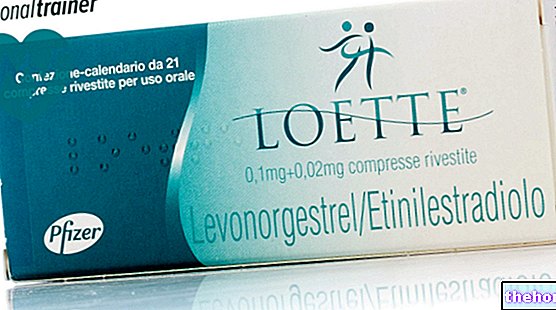Active ingredients: gentamicin sulfate and betamethasone valerate
GENTALYN BETA 0.1% + 0.1% Cream
Gentalyn Beta package inserts are available for pack sizes:- GENTALYN BETA 0.1% + 0.1% Cream
- GENTALYN BETA 0.1% + 0.05% Cream
Why is Gentalyn Beta used? What is it for?
PHARMACOTHERAPEUTIC CATEGORY
Active corticosteroids, combinations with antibiotics.
THERAPEUTIC INDICATIONS
Gentalyn Beta 0.1% + 0.1% is indicated in the topical treatment of secondarily infected allergic or inflammatory dermatoses or when there is a threat of infection. The indications for its use are: eczema (atopic, infantile, nummular), anogenital and senile pruritus, contact dermatitis, seborrheic dermatitis, neurodermatitis, intertrigo, solar erythema, exfoliative dermatitis, radiation dermatitis, stasis dermatitis and psoriasis
Contraindications When Gentalyn Beta should not be used
Hypersensitivity to the active substances or to any of the excipients.
Topical cortisones are contraindicated in patients suffering from cutaneous tuberculosis and herpes simplex as well as from viral diseases with skin localization.
Precautions for use What you need to know before taking Gentalyn Beta
In case of irritation or sensitization related to the use of Gentalyn Beta 0.1% + 0.1%, the treatment must be suspended and an adequate therapy instituted. Any of the undesirable effects described for systemic corticosteroids, including hypoadrenalism, can also occur with topical corticosteroids, especially in pediatric patients.
The systemic absorption of topical corticosteroids increases with the treatment of large skin surfaces or with the use of the occlusive dressing. In such cases, or when prolonged treatment is planned, appropriate precautions are required, particularly in pediatric patients.
Cross allergenicity between aminoglycosides has been demonstrated.
Systemic absorption of topical gentamicin is increased if large areas of the body are treated, especially if skin damage is present or if occlusive dressing techniques are used, or if treatment is planned for a long time. In such situations, they can occur. the undesirable effects that are evident with the systemic use of gentamicin. Therefore, appropriate precautions should be taken especially with infants and children (see below "Use in pediatrics").
Prolonged use of topical antibiotics sometimes allows the proliferation of non-sensitive organisms including fungi. In this case, or if irritation, sensitization or superinfection develops, treatment with gentamicin should be suspended and specific therapy instituted.
Interactions Which drugs or foods can modify the effect of Gentalyn Beta
Tell your doctor or pharmacist if you have recently taken any other medicines, even those without a prescription.
No interaction studies have been performed
Warnings It is important to know that:
The medicine contains chlorocresol and cetostearyl alcohol which can cause local allergic reactions.
Use in pediatrics: pediatric patients may prove more sensitive than adults to the depression of the hypothalamic-pituitary-adrenal axis induced by topical cortisone and to the effects of exogenous corticosteroids, given the greater absorption due to the high ratio of skin surface to body weight.
Depression of the hypothalamic-pituitary adrenal axis, Cushing's syndrome, growth retardation and weight growth, and intracranial hypertension have been described in children treated with topical corticosteroids. In children, manifestations of hypoadrenalism include low cortisol levels and failure to respond to ACTH stimulation. Manifestations of intracranial hypertension include fontanel tension, headache, and bilateral papilledema.
Pregnancy and breastfeeding
Pregnancy
Ask your doctor or pharmacist for advice before taking any medicine.
The safety of topical corticosteroids has not been established in pregnant women; therefore, during pregnancy, the use of drugs belonging to this class must be limited to cases in which the expected benefit justifies the potential risk for the fetus. In pregnant patients these drugs should not be used intensively, at high doses or for long periods of time
Feeding time
As it is not known whether topical administration of corticosteroids can result in sufficient systemic absorption to produce measurable concentrations in breast milk, a decision must be made whether to discontinue breastfeeding or to discontinue therapy, taking into account the importance of the drug to the mother.
Effects on ability to drive and use machines
Gentalyn Beta 0.1% + 0.1% does not affect the ability to drive or use machines.
Gentalyn Beta 0.1% + 0.1% cannot be used for ophthalmic use.
Important information about some of the excipients.
The medicine contains chlorocresol which can cause allergic reactions. The medicinal product also contains cetostearyl alcohol which may cause local skin reactions (e.g. contact dermatitis).
Dosage and method of use How to use Gentalyn Beta: Dosage
Apply a small amount of the cream to the affected area 2-3 times a day.
Refractory psoriatic lesions and secondary infected deep dermatoses may respond better to corticosteroid therapy and local antibiotics when used with the occlusive dressing technique described below.
Occlusive dressing technique
- Apply a thick layer of cream on the entire surface of the lesion under a light gauze and cover with transparent, waterproof and flexible plastic material, beyond the edges of the treated area.
- Seal the edges on healthy skin with a patch or other means.
- Leave the dressing in place for 1-3 days and repeat the procedure 3-4 times as needed.
With this method, a noticeable improvement is often observed within a few days. Rarely, miliary rashes of folliculitis develop on the skin under the dressing requiring removal of the plastic covering.
Overdose What to do if you have taken too much Gentalyn Beta
In case of accidental ingestion / intake of an overdose of Gentalyn Beta 0.1% + 0.1%, notify your doctor immediately or go to the nearest hospital.
If you have any questions about the use of Gentalyn Beta 0.1% + 0.1%, ask your doctor or pharmacist.
Symptoms: Excessive or prolonged use of topical corticosteroids can depress adrenal pituitary function, causing secondary hypoadrenalism and manifestations of hypercorticism including Cushing's syndrome.
A single episode of gentamicin overdose should not produce any symptoms. The excessive and prolonged use of topical gentamicin can lead to the formation of lesions due to fungi and non-sensitive bacteria.
Treatment: Appropriate symptomatic treatment is indicated. Symptoms of acute hypercorticism are usually reversible. If necessary, treat the electrolyte imbalance. In the case of chronic toxicity, slow elimination of the corticosteroid is recommended. In the case of proliferation of fungi and bacteria, an "appropriate antifungal or antibacterial therapy is indicated
Side Effects What are the side effects of Gentalyn Beta
Like all medicines, Gentalyn Beta 0.1% + 0.1% can cause side effects, although not everybody gets them.
Adverse reactions to Gentalyn Beta cream have been reported very rarely and include hypersensitivity, rash and skin discoloration.
The following undesirable effects have been described, related to the use of topical corticosteroids, especially following the use of occlusive dressing: burning, itching, irritation, dry skin, folliculitis, hypertrichosis, acneiform eruptions, hypopigmentation, perioral dermatitis, contact dermatitis allergic, skin maceration, secondary infection, skin atrophy, striae and miliaria.
Gentamicin treatment may produce temporary irritation (erythema and itching) which usually does not require discontinuation of treatment.
Compliance with the instructions contained in the package leaflet reduces the risk of undesirable effects. If any of the side effects gets serious or if you notice any side effects not described in this leaflet, please tell your doctor.
Expiry and Retention
Expiry: see the expiry date indicated on the package.
Warning: do not use the medicine after the expiry date indicated on the package. The expiry date indicated refers to the product in intact packaging, correctly stored.
This medicine does not require any special storage conditions.
After first opening, the medicine is valid for 3 months.
Keep this medicine out of the reach and sight of children.
Medicines should not be disposed of via wastewater or household waste. Ask your pharmacist how to dispose of medicines you no longer use. This will help protect the environment.
COMPOSITION
100 g of cream contain: active ingredients: gentamicin sulphate 0.166 g corresponding to 0.1 g of gentamicin; betamethasone 17-valerate 0.122 g corresponding to 0.1 g of betamethasone. Excipients: chlorocresol, polyethylene glycol monocethyl ether (Cetomacrogol 1000), cetostearyl alcohol, white petroleum jelly, liquid paraffin, sodium phosphate, phosphoric acid, purified water.
PHARMACEUTICAL FORM AND CONTENT
Cream for skin use, 30 g tube.
Source Package Leaflet: AIFA (Italian Medicines Agency). Content published in January 2016. The information present may not be up-to-date.
To have access to the most up-to-date version, it is advisable to access the AIFA (Italian Medicines Agency) website. Disclaimer and useful information.
01.0 NAME OF THE MEDICINAL PRODUCT
GENTALYN BETA CREAM
02.0 QUALITATIVE AND QUANTITATIVE COMPOSITION
Gentalyn Beta 0.1% + 0.1% cream
100 g of cream contains 0.166 g of gentamicin sulfate (corresponding to 0.1 g of gentamicin) and 0.122 g of betamethasone 17-valerate (corresponding to 0.1 g of betamethasone).
Gentalyn Beta 0.1% + 0.05% cream
100 g of cream contains 0.166 g of gentamicin sulfate (corresponding to 0.1 g of gentamicin) and 0.061 g of betamethasone 17-valerate (corresponding to 0.05 g of betamethasone).
For the full list of excipients, see section 6.1.
03.0 PHARMACEUTICAL FORM
Cream.
04.0 CLINICAL INFORMATION
04.1 Therapeutic indications
Gentalyn Beta 0.1% + 0.1% and Gentalyn Beta 0.1% + 0.05% are indicated in the topical treatment of secondarily infected allergic or inflammatory dermatoses or when there is a threat of infection. The indications for their use are: eczema (atopic, infantile, nummular), anogenital and senile pruritus, contact dermatitis, seborrheic dermatitis, neurodermatitis, intertrigo, solar erythema, exfoliative dermatitis, radiation dermatitis, stasis dermatitis and psoriasis.
Gentalyn Beta 0.1% + 0.05% is particularly indicated in the maintenance therapy of severe or resistant dermatoses once an adequate improvement has been obtained with Gentalyn Beta 0.1% + 0.1%, for the treatment of less severe dermatoses or less resistant, particularly in those affecting large areas of the body or chronic ones requiring prolonged therapy.
04.2 Posology and method of administration
Apply a small amount of the cream to the affected area 2-3 times a day.
Refractory psoriatic lesions and secondary infected deep dermatoses may respond better to corticosteroid therapy and local antibiotics when used with the occlusive dressing technique described below.
Occlusive dressing technique
1. Apply a thick layer of cream to the entire surface of the lesion under a light gauze and cover with transparent, waterproof and flexible plastic material, beyond the edges of the treated area.
2. Seal the edges on healthy skin with a patch or other means.
3. Leave the dressing in place for 1-3 days and repeat the procedure 3-4 times as needed.
With this method, a noticeable improvement is often observed within a few days. Rarely, miliary rashes of folliculitis develop on the skin under the dressing requiring removal of the plastic covering.
04.3 Contraindications
Hypersensitivity to the active substances or to any of the excipients listed in section 6.1.
Topical cortisones are contraindicated in patients suffering from cutaneous tuberculosis and herpes simplex as well as from viral diseases with skin localization.
04.4 Special warnings and appropriate precautions for use
In case of irritation or sensitization related to the use of Gentalyn Beta 0.1% + 0.1% or Gentalyn Beta 0.1% + 0.05%, the treatment must be suspended and an adequate therapy instituted. Any of the undesirable effects described for systemic corticosteroids, including hypoadrenalism, can also occur with topical corticosteroids, especially in pediatric patients.
Cross allergenicity between aminoglycosides has been demonstrated.
The systemic absorption of topical corticosteroids increases with the treatment of large skin surfaces or with the use of the occlusive dressing. In such cases, or when prolonged treatment is planned, appropriate precautions are required, particularly in pediatric patients.
Systemic absorption of topical gentamicin is increased if large areas of the body are treated, especially if skin damage is present or if occlusive dressing techniques are used, or if treatment is planned for a long time. In such situations, they can occur. the undesirable effects that are evident with the systemic use of gentamicin. Therefore, appropriate precautions should be taken especially with infants and children (see below "Use in pediatrics").
Prolonged use of topical antibiotics sometimes allows the proliferation of non-sensitive organisms including fungi. In this case, or if irritation, sensitization or superinfection develops, treatment with gentamicin should be suspended and specific therapy instituted.
Pediatric population
Pediatric patients may prove more sensitive than adults to the depression of the hypothalamic-pituitary-adrenal axis induced by topical cortisone and to the effects of exogenous corticosteroids, given the greater absorption due to the high ratio of skin surface to body weight.
Depression of the hypothalamic-pituitary-adrenal axis, Cushing's syndrome, growth retardation and weight growth, and intracranial hypertension have been described in children treated with topical corticosteroids. In children, manifestations of hypoadrenalism include low levels of cortisolemia and failure to respond to stimulation. with ACTH Manifestations of intracranial hypertension include tension of the fontanelles, headache, and bilateral papilledema.
Gentalyn Beta 0.1% + 0.1% and Gentalyn Beta 0.1% + 0.05% cannot be used for ophthalmic use.
04.5 Interactions with other medicinal products and other forms of interaction
No interaction studies have been performed.
04.6 Pregnancy and lactation
Pregnancy
The safety of topical corticosteroids has not been established in pregnant women; therefore, during pregnancy, the use of medicines belonging to this class should be limited to cases where the expected benefit justifies the potential risk to the fetus. In pregnant patients these medicines should not be used intensively, at high doses or for long periods of time.
Feeding time
As it is not known whether topical administration of corticosteroids can result in sufficient systemic absorption to produce measurable concentrations in breast milk, a decision must be made whether to discontinue breastfeeding or to discontinue therapy, taking into account the importance of the medicinal product to the mother.
04.7 Effects on ability to drive and use machines
Gentalyn Beta 0.1% + 0.1% and Gentalyn Beta 0.1% + 0.05% do not affect the ability to drive or use machines.
04.8 Undesirable effects
Adverse reactions to Gentalyn Beta cream have been reported very rarely and include hypersensitivity, rash and skin discoloration.
The following undesirable effects have been described, related to the use of topical corticosteroids, especially following the use of occlusive dressing: burning, itching, irritation, dry skin, folliculitis, hypertrichosis, acneiform eruptions, hypopigmentation, perioral dermatitis, contact dermatitis allergic, skin maceration, secondary infection, skin atrophy, striae and miliaria.
Gentamicin treatment may produce temporary irritation (erythema and itching) which usually does not require discontinuation of treatment.
Reporting of suspected adverse reactions
The reporting of suspected adverse reactions that occur after the authorization of the medicinal product is important, as it allows continuous monitoring of the benefit / risk ratio of the medicinal product. Healthcare professionals are asked to report any suspected adverse reactions via the Italian Medicines Agency. , website: https://www.aifa.gov.it/content/segnalazioni-reazioni-avverse.
04.9 Overdose
Symptoms: Excessive or prolonged use of topical corticosteroids can depress pituitary-adrenal function, causing secondary hypoadrenalism and manifestations of hypercorticism including Cushing's syndrome.
A single episode of gentamicin overdose should not produce any symptoms. The excessive and prolonged use of topical gentamicin can lead to the formation of lesions due to fungi and non-sensitive bacteria.
Treatment: appropriate symptomatic treatment is indicated. Symptoms of acute hypercorticism are usually reversible. If necessary, treat the electrolyte imbalance. In the case of chronic toxicity, slow elimination of the corticosteroid is recommended. In the case of proliferation of fungi and bacteria, an "appropriate antifungal or antibacterial therapy is indicated.
05.0 PHARMACOLOGICAL PROPERTIES
05.1 Pharmacodynamic properties
Pharmacotherapeutic group: active corticosteroids, combinations with antibiotics.
ATC code: D07CC01
Gentalyn Beta 0.1% + 0.1% and Gentalyn Beta 0.1% + 0.05% combine the broad-spectrum antibacterial effect of topical gentamicin with the anti-inflammatory, anti-allergic and anti-itching action of betamethasone 17-valerate.
The therapeutic effects of the two components are described separately below.
Gentamicin is produced by fermentation of Micromonospora purpurea and is obtained as a white amorphous powder, soluble in water and stable in heat.
This broad-spectrum antibiotic isolated in the research laboratories of the Schering Corporation U.S.A. it has been shown to be highly effective in the topical treatment of primary and secondary bacterial infections of the skin.
Gentamicin-sensitive bacteria include Staphylococcus aureus (coagulase positive, coagulase negative and penicillinase producing strains), Gram-negative bacteria, Pseudomonas aeruginosa, Aerobacter aerogenes, Escherichia coli, Proteus vulgaris and Klebsiella pneumoniae.
The results of the skin reaction tests carried out in the clinic have shown that gentamicin is not a primary irritant; moreover, gentamicin has a low skin sensitization index.
Betamethasone 17-valerate is highly effective in the topical treatment of dermatoses that respond to corticosteroid therapy.
Suppression of the inflammatory reaction produces prompt and prolonged control of pruritus, erythema and infiltration.
The reduction of scratching decreases the chances of exacerbation of the lesions and the onset of secondary infections.
Clinical studies carried out in various localized and systemic diseases sensitive to corticosteroids indicate that betamethasone 17-valerate causes a more rapid and effective response in the majority of patients.
05.2 Pharmacokinetic properties
The transcutaneous absorption of topical corticosteroids is generally negligible, however it may increase if large skin surfaces are treated or the occlusive dressing technique is used.
In children, transcutaneous absorption is usually higher. Percutaneous absorption of gentamicin is usually absent.
05.3 Preclinical safety data
Acute toxicity studies in mice, using gentamicin in aqueous solution, gave the following LD50: subcutaneous 485 mg / kg, endoperitoneum 430 mg / kg, intravenous 75 mg / kg, oral> 9050 mg / kg. The LD50 of betamethasone valerate was studied on mice and rats, with the following results: mouse per os 4210 mg / kg, s.c. 518 mg / kg, i.p. 673 mg / kg; rat per os 100 mg / kg. Gentamicin and betamethasone valerate do not have structural similarities with compounds of proven carcinogenic action. In chronic toxicity studies and during clinical trials, phenomena capable of suggesting carcinogenic potential have never been highlighted.
The results of the skin reaction tests carried out in the clinic have shown that gentamicin is not a primary irritant; moreover, gentamicin has a low skin sensitization index.
06.0 PHARMACEUTICAL INFORMATION
06.1 Excipients
Chlorocresol, mono-ethylene glycol polyethylene glycol (cetomacrogol 1000), cetostearyl alcohol, white petroleum jelly, liquid paraffin, sodium phosphate, phosphoric acid, purified water.
06.2 Incompatibility
Not relevant.
06.3 Period of validity
2 years in intact packaging.
After first opening: Gentalyn Beta 0.1% + 0.1% cream is valid for 3 months.
06.4 Special precautions for storage
Gentalyn Beta 0.1% + 0.1% cream: this medicine does not require any special storage conditions.
Gentalyn Beta 0.1% + 0.05% cream: do not store above 25 ° C.
06.5 Nature of the immediate packaging and contents of the package
Gentalyn Beta 0.1% + 0.1% cream: 30 g tube
Gentalyn Beta 0.1% + 0.05% cream: 20 g tube
06.6 Instructions for use and handling
No special instructions.
07.0 MARKETING AUTHORIZATION HOLDER
MSD Italia S.r.l.
Via Vitorchiano, 151
00189 Rome
Sales dealership:
Essex Italia S.r.l.
Via Vitorchiano, 151
00189 Rome
08.0 MARKETING AUTHORIZATION NUMBER
Gentalyn Beta 0.1% + 0.1% cream AIC 021736020
Gentalyn Beta 0.1% + 0.05% cream AIC 021736032
09.0 DATE OF FIRST AUTHORIZATION OR RENEWAL OF THE AUTHORIZATION
Date of first authorization: April 16, 1970
Date of most recent renewal: 01 June 2010
10.0 DATE OF REVISION OF THE TEXT
July 2015




























